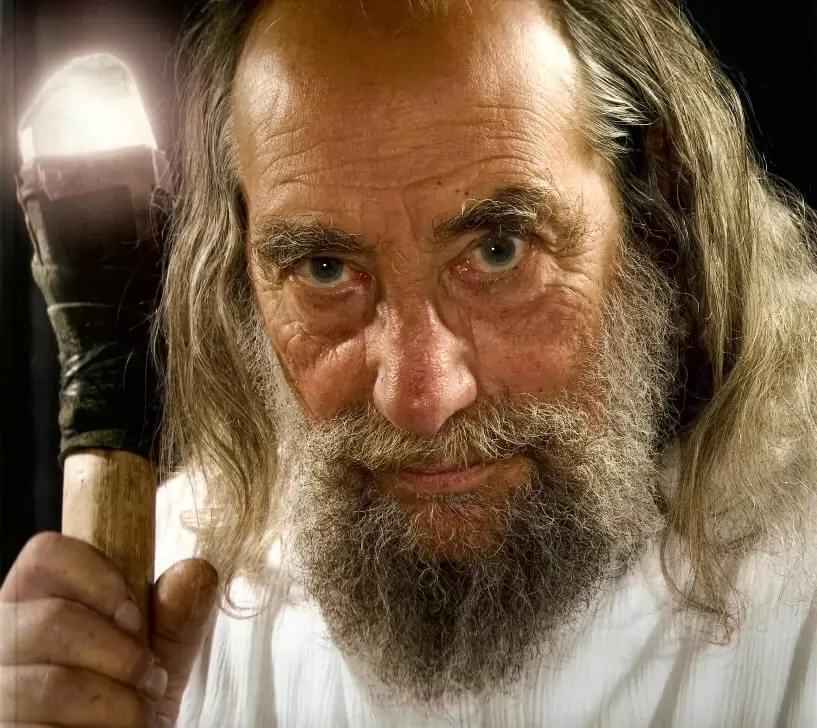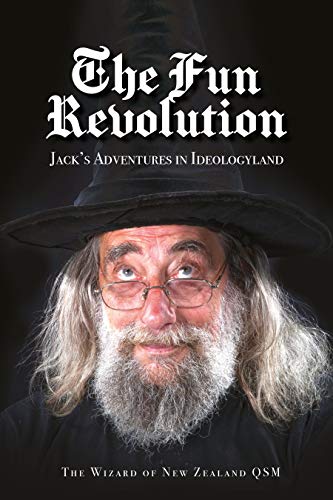The proposed exhibition and imagination experiment is an attempt by ‘The Living Work of Art’, the Wizard of New Zealand, to “re-enchant the world” through combining and synthesizing science, religion, magic and art in a coordinated virtual reality event on the internet.
Disenchantment
Between the 15th and 17th Centuries Christendom began the process of becoming “Western Civilization” or just “The West”. How could such a fundamental change in identity from a metaphysical belief system to a mere physical location have taken place?
Many technological, religious, political, economic, technological and scientific transformations had their beginnings in this period, together with a remarkable growth of religious, economic and political individualism. Various explanations have been offered, but whatever their differing explanations, historians, sociologists and psychologists agree that it represented a progressive ‘disenchantment of the world’.
Revitalisation Movements
As the first mercantile industrial civilization, the Ancient Greeks went a long way towards disenchanting the world by splitting the Natural from the Supernatural. The Romans institutionalised and expanded the process. After the collapse of civilisation in Europe and the Middle East, which followed the disintegration of Rome, the new Christian metaphysics filled the void of meaning. The restoration of meaning to cultures which have had their most precious beliefs confounded is not only provided by new religious or secular interpretations of the historical meaning of existence, anthropologists have described a wide variety of magical revitalisation movements which also perform this function.
There is no reason to assume that creative artistic expression combined with magical explanations could not fulfil the same functions today. The early 16th Century in Europe and much of the early history of China, where magical explanations of the operation of the universe were popular, show that technology can flourish without the rapid mechanization and industrialisation that followed the 17th Century Scientific Revolution in Europe. The connection between the intellectual and the aesthetic is much stronger in magic than in science which is basically utilitarian. Both Lewis Mumford in The Myth of the Machine and Jacques Ellul in The Technological Society have examined and criticised the unique mechanistic philosophy which lies at the base of our civilisation.
Since the late 19th Century new ideas in psychology, anthropology, physics, philosophy and advances in technology (particularly electronic communication) are subverting the reductionist mechanistic metaphysics which replaced the traditional religious metaphysics. The process of re-enchantment of the world can now begin.
Art has a spell-binding effect and beautiful rituals can be more effective than complex and often highly irrational dogma in binding communities together. The post-industrial world is completely dependent on mass advertising (a largely artistic phenomenon) which moulds emotions to create and maintain the demand for commodities. In addition in the 20th Century skilful political propaganda has motivated millions to adopt irrational and puritanical ideologies involving massive social and technological engineering.
The Exhibition
The exhibition culminates in two sensational events. Firstly the entire physical universe is turned inside-out as a dramatic ‘spell’ by a conformal inversion of the traditional co-ordinates; a rational scientific thought experiment. This new model of the universe has important religious, magical and aesthetic implications. A series of models of historical human attempts by other civilisations to visualize the universe would build up to this. The second sensational event is the “Imagination Experiment” which is the culmination of the exhibition. New virtual reality technology is employed to show the flight of a levitating shaman to the centre of the universe as pure thought. Through the Internet this event could be linked up to occur simultaneously with other viewers all over the world, either in art galleries or though big screens in public squares.
Long Preparation
Since 1970 the Living Work of Art has been creating his own self-organising cosmology outlining the dynamic forces and relationships from the evolving physical and biological systems to the psychological, social, cultural and personal. This can be shown by electronically animating the icon of The Tree of Life, a series of musical converging spheres/circles of time, space and identity and accompanying kinematic animations of evolving self-organising systems. Time, through a probabilistic event hierarchy converges on NOW. Space or location converges on HERE. Identity or intentionality converges on ME. These are all coordinated. Notes on the working of the cosmology have already been prepared and can be found in the Cosmology section of this website.
Without sufficient funding this exhibition could not be attempted. A suitable location would also be essential. For any sponsors the consequent publicity such a sensational international event would generate would be highly rewarding. Pre-publicity would also be easy since The Wizard is already well known internationally as a unique character, regardless of his status as a conceptual artist.
Note on Sensationalism
I have developed a cultural evolutionary theory which is a modified version of Pitirim Sorokin’s cyclical theory. Here is a brief outline. In all major civilizations there is an initial Ideational stage when revitalizing ideas arise and prove attractive to demoralized people. The Idealistic stage occurs if these ideas succeed politically and become institutionalized. The Sensate stage takes place when the original ideas themselves begin to lose their magic as the institutions usually lose vision of their original ends and their new ends become maintaining and expanding themselves. Finally to avoid collapse, the institutions develop highly irrational aesthetic techniques to persuade citizens to continue to support activities which have become increasingly meaningless and stressful. I call this the Sensational stage. Our civilisation can be seen to have passed through the Sensate stage, which lasted from the late 15th Century until the late 19th Century, and has now entered the Sensational stage as “The Consumer Society”.

